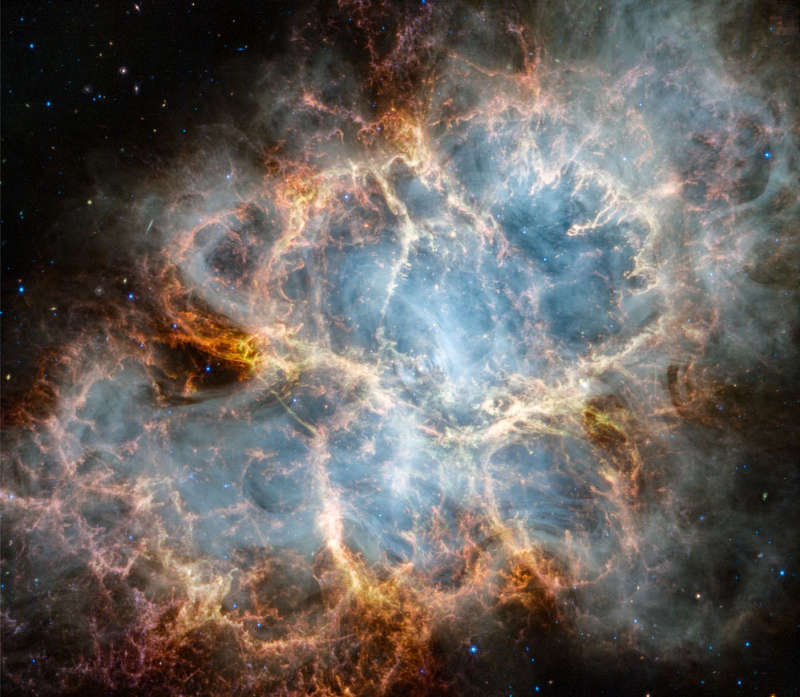
|
Credit & Copyright: NASA,
ESA,
CSA,
STScI;
Jeff Hester (ASU), Allison Loll (ASU), Tea Temim (Princeton University)
Explanation:
Cataloged as M1, the Crab Nebula is the first on
Charles Messier's famous list of things which are
not comets.
In fact, the Crab Nebula is
now known to be a supernova remnant, an expanding
cloud of debris from the death explosion of a massive star.
The violent birth of the Crab was
witnessed by astronomers
in the year 1054.
Roughly
10
light-years across,
the nebula is still expanding
at
a rate
of about 1,500 kilometers per second.
You can see the expansion by
comparing
these sharp images from the
Hubble Space Telescope and James Webb Space Telescope.
The Crab's dynamic, fragmented filaments were captured in visible
light by Hubble in 2005 and Webb in infrared light in 2023.
This
cosmic crustacean
lies about 6,500 light-years away in the
constellation Taurus.
|
January February March April May June July August September October November December |
| ||||||||||||||||||||||||||||||||||||||||||||||||
NASA Web Site Statements, Warnings, and Disclaimers
NASA Official: Jay Norris. Specific rights apply.
A service of: LHEA at NASA / GSFC
& Michigan Tech. U.
Based on Astronomy Picture
Of the Day
Publications with keywords: M 1 - Crab Nebula
Publications with words: M 1 - Crab Nebula
See also:
- APOD: 2025 August 24 B The Spinning Pulsar of the Crab Nebula
- APOD: 2024 July 23 B The Crab Nebula from Visible to X Ray
- M1: The Incredible Expanding Crab
- M1: The Crab Nebula
- APOD: 2023 March 20 B M1: The Expanding Crab Nebula
- APOD: 2023 January 15 B M1: The Crab Nebula from Hubble
- The Spinning Pulsar of the Crab Nebula
